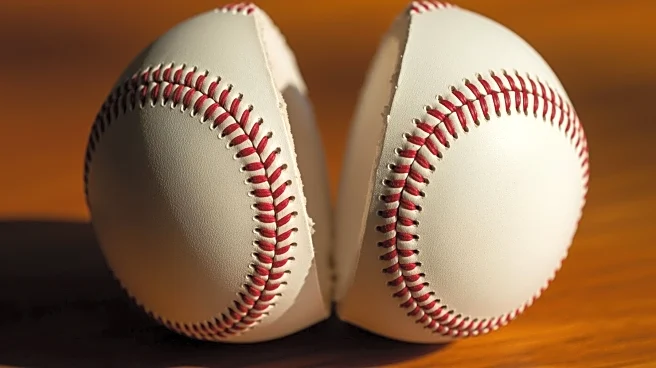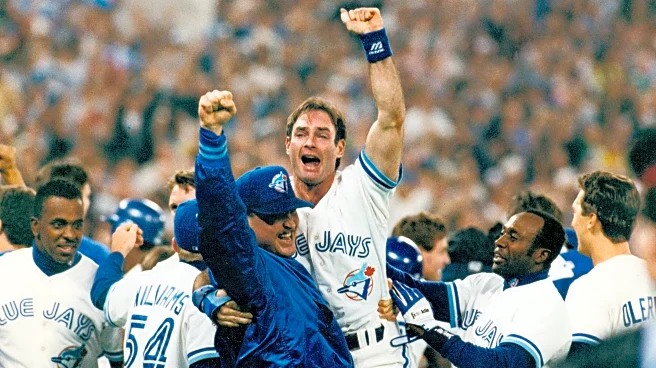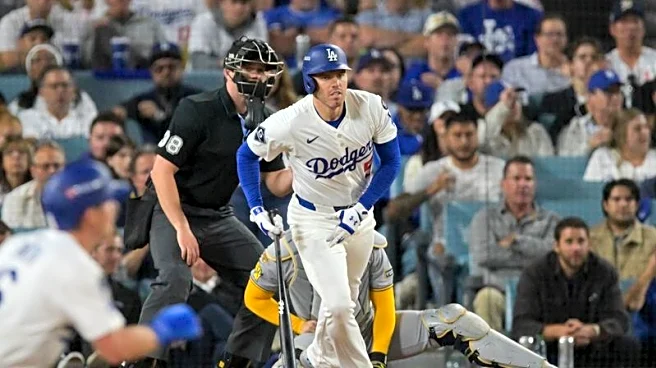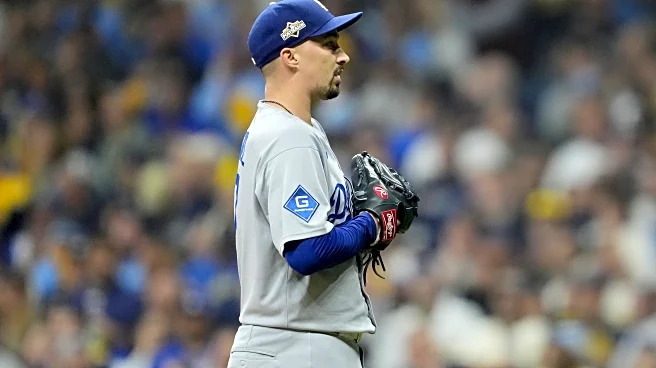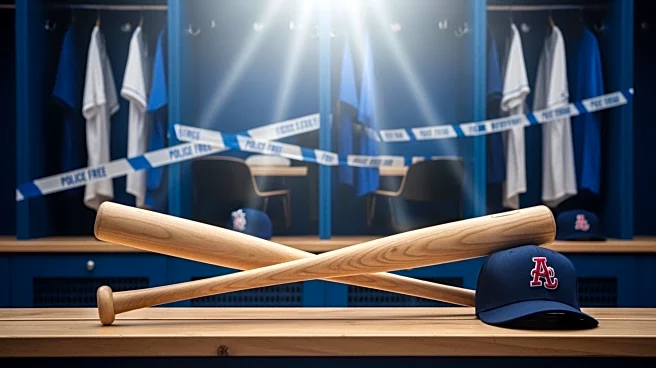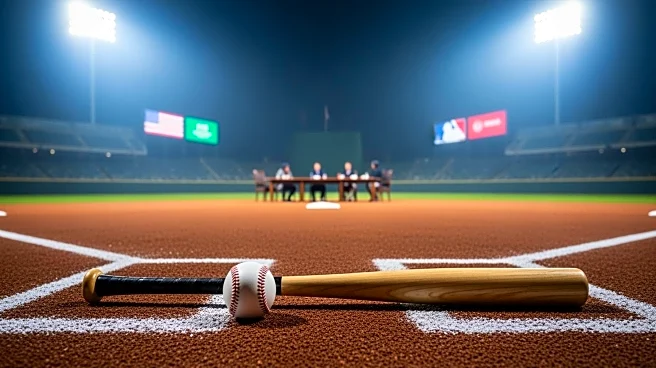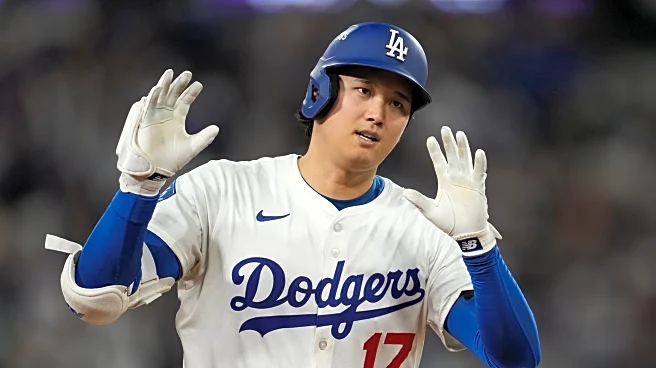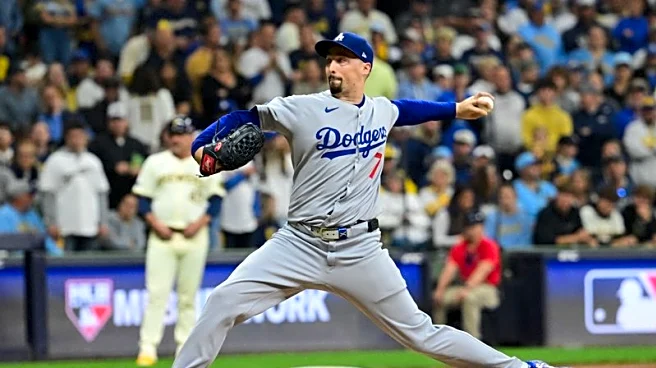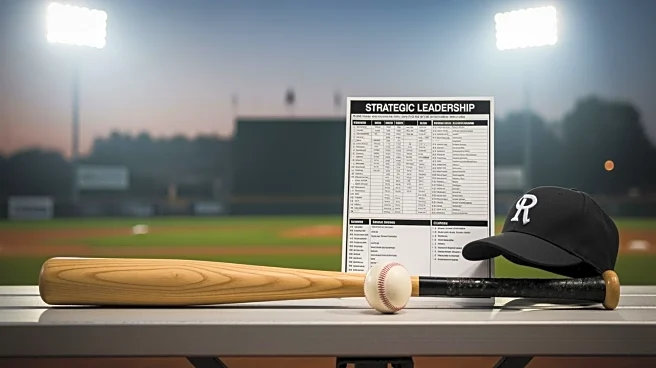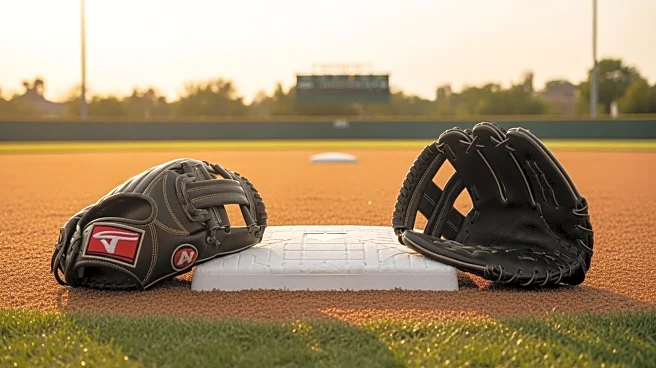What's Happening?
The 2025 World Series between the Toronto Blue Jays and Los Angeles Dodgers is set to showcase the splitter pitch like never before. Historically a rare pitch in Major League Baseball, the splitter has
gained prominence, particularly in this postseason. The Blue Jays and Dodgers have utilized the splitter extensively, with Toronto's Kevin Gausman and Trey Yesavage, and Los Angeles' Yoshinobu Yamamoto and Shohei Ohtani leading the charge. The Blue Jays have thrown 16% splitters this postseason, while the Dodgers have thrown 9%, both leading their respective leagues. This trend is expected to culminate in a record-setting number of splitters thrown during the World Series.
Why It's Important?
The increased use of the splitter pitch in the World Series highlights a shift in pitching strategies within Major League Baseball. As teams prioritize strikeouts, the splitter's effectiveness in generating swings and misses becomes crucial. This development could influence future pitching approaches, encouraging more teams to adopt the splitter. The focus on secondary pitches over fastballs, as evidenced by the postseason's highest average fastball velocity yet lowest usage, underscores a broader trend in MLB. Teams and players who adapt to these changes may gain a competitive edge, impacting player development and scouting.
What's Next?
As the World Series progresses, the performance of pitchers utilizing the splitter will be closely monitored. Success in this high-stakes environment could lead to increased adoption of the pitch across the league. Additionally, the outcome of the series may influence offseason training and strategy adjustments for teams looking to enhance their pitching arsenals. The Blue Jays and Dodgers' reliance on the splitter could set a precedent for future playoff strategies, potentially altering how teams prepare for postseason play.
Beyond the Headlines
The rise of the splitter pitch in MLB could have long-term implications for player health and career longevity. As pitchers increasingly rely on secondary pitches, the physical demands on their arms may change, potentially reducing injury risks associated with high-velocity fastballs. This shift could also affect how young pitchers are trained, emphasizing the development of diverse pitch repertoires. Furthermore, the strategic evolution in pitching may influence the types of players teams prioritize in drafts and trades, reshaping the league's competitive landscape.
